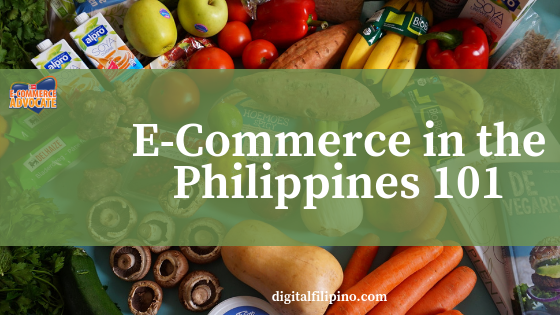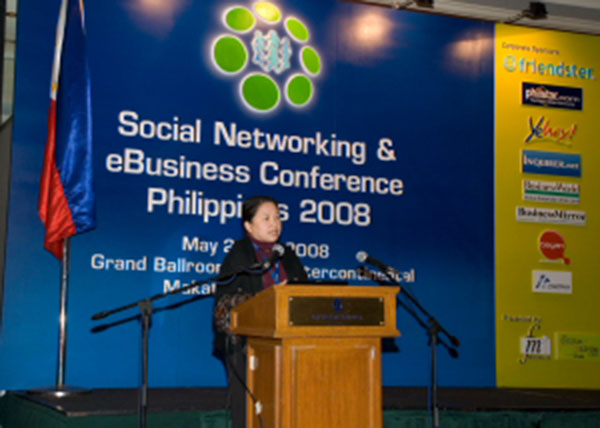E-Commerce in the Philippines 101
What is Electronic Commerce?
Electronic Commerce (e-commerce) is the exchange of information or transactions using any form of electronic communication. It can also be referred to as an electronic transaction.
E-Commerce = Commercial Electronic Transactions or Non-Commerce Electronic Transactions
With the E-Commerce Law or Republic Act 8792, both commercial and non-commercial activities are considered e-commerce transactions. It is not exclusive to monetary transactions.
Section 6.b and 6.k of IMPLEMENTING RULES AND REGULATIONS OF THE ELECTRONIC COMMERCE ACT
“Commercial Activities” shall be given a wide interpretation so as to cover matters arising from all relationships of a commercial nature, whether contractual or not. The term shall likewise refer to acts, events, transactions, or dealings occurring between or among parties including, but not limited to, factoring, investments, leasing, consulting, insurance, and all other services, as well as the manufacture, processing, purchase, sale, supply, distribution or transacting in any manner, of tangible and intangible property of all kinds such as commodities, goods, merchandise, financial and banking products, patents, participation, shares of stock, software, books, works of art and other intellectual property.
“Non-Commercial Activities” are those not falling under commercial activities.
With this definition, e-commerce or electronic transaction is not limited to the Internet alone. Various electronic transactions are good examples of e-commerce including:
- Discussing business over the telephone
- Sending fax
- Withdrawing money from an ATM machine
- Sending a text message confirming purchase or making a payment through cellular phone
- Paying for groceries using a credit card
- Ordering a birth or NBI certificate over the Internet
- among others
E-Commerce businesses though have no special exemption. Whatever policies are applicable and authorized in the real world are treated the same in the electronic world. All e-commerce transactions are governed by existing laws. The E-Commerce Law empowers all existing laws by recognizing its electronic counterpart.
People who are reluctant with e-commerce in the Philippines often reason that they have no interest in using it. But actually, we’ve been practically doing e-commerce since the emergence of computers and telecom technologies.
It even became more prevalent as fax machines entered our lives. Retail shops implemented point of sales (POS) systems and barcoding.
Automated teller machines (ATM) used in banks. Wireless telecom offering mobile phone services enabling us to call, send a text message and do Internet-related activities.
All of these forms of e-commerce system where human intervention is becoming less and less.

Types of E-Commerce Activities
In a snapshot, there are four types of doing e-commerce. Let me use a simple analogy.
Business to Consumer
When you purchase goods from the supermarket, that is an example of Business-to-Consumer (B2C) transaction.
So when you buy items from your favorite shopping web sites, that is B2C, e-commerce between businesses and consumers. The automated reloading of your prepaid phone is also a B2C transaction.
Booking a Grab ride and buying an airline ticket is also a B2C transaction.
Business to Business
The supermarket will also need to purchase goods from its suppliers. The business transaction that takes place on this end is what we would refer to as Business-to-Business (B2B).
So when physical retail stores, purchase their goods from their suppliers that is B2B. E-commerce between businesses. The same applies to prepaid phone card reload dealers who purchase credits from their supplier.
E-commerce enables entrepreneurs to sell their goods through their own website and related platforms. Websites like Lazada, Island Rose, 199jobs, OneStore are just some e-commerce players who sell merchant’s goods and services online.
Consumer to Consumer
E-Commerce is not limited to businesses. Individuals are also trading directly online through classified sites like OLX and portals like Shopee, Ebay. Mobile C2C sites are on the rise too.
This has extended to social media via Facebook, Pinterest, and Instagram.
Government to Business and Government to Consumer
Government has also embraced e-commerce to serve its constituency. Government to Business (G2B) examples can include:
Government to Consumer (G2C) takes place when citizens:
- Order birth or marriage documents online
- Books for passport renewal
- Apply for NBI clearance
There are many more variations of e-commerce activities. I hope the above will help you get started in understanding it.
E-commerce is not only for big companies
With global trade initiatives, it is imperative for MSMEs to compete internationally with foreign brands locally and internationally.
Manual processes in the supply chain that are slow, redundant, unreliable, inefficient can be replaced with more efficient ones.
Entrepreneurs who sell goods and services to a global audience can utilize the Internet as a medium. Internet-based businesses are open all the time and can accommodate any customer worldwide.
An Internet-based business is not just about building websites and expect profits to just come. The infrastructure and processes to complete the sales cycle must be covered. It is similar to building a physical branch or office but accessible to a global audience.
For MSMEs, e-commerce gives them the opportunity to promote their products online to attract buyers.
For service providers, including freelancers, this is when you offer your expert services online, get hired, and paid in the process.
It is estimated as of end 2018, there are around 70 million Filipino Internet users out of more than 100 million Filipinos.
Around 35 million are buying online. The Philippines is considered one of the fastest growing e-commerce markets in Southeast Asia.
Online shopping product categories are growing including:
- Fashion (Zalora)
- Beauty (Ellana Minerals)
- Electronics (Kimstore)
- Physical media (Powerbooks)
- Food (Foodpanda)
- Personal care
- Furniture
- Appliances
- Toys
- Do-it-yourself product types
- Hobbies
- Travel (Cebu Pacific)
- Accommodations
- Digital music
- Video games
More than half of the country’s MSMEs today utilize various electronic commerce platforms to do their trade activities. More than half of their revenues and transactions are made online.

Revenue Models
The business model usually focuses on 3 areas:
Guru models
Examples can include this website, DigitalFilipino.com or my personal website, where services and expertise are showcased. Another example can be service marketplaces like Upwork, OnlineJobs, among others where professionals can be hired.
Retail models
Selling of products or services, usually on fixed price, that can be purchased online. Some of them I already mentioned above.
Subscription
Selling of products or services that can be availed of as a package on a regular basis (weekly, monthly, quarterly). That can include your web hosting, community membership, training program, among others.
Check out some of the lists of sites where you can shop online here.
Further reading:



Comment (1)
Great Article Insight ! With a history of over 40,000 years, philippines is one of the 17 mega diverse countries in the world. Its rich diversity allows people to export a significant number of things around the world. Being the 39 th largest economy around the world, filipino eCommerce expects a business of 2.5 billion USD by 2021. To Upgrade more Information to this article @ https://ph.selluseller.com/resources/blogs/top-products-to-sell-online